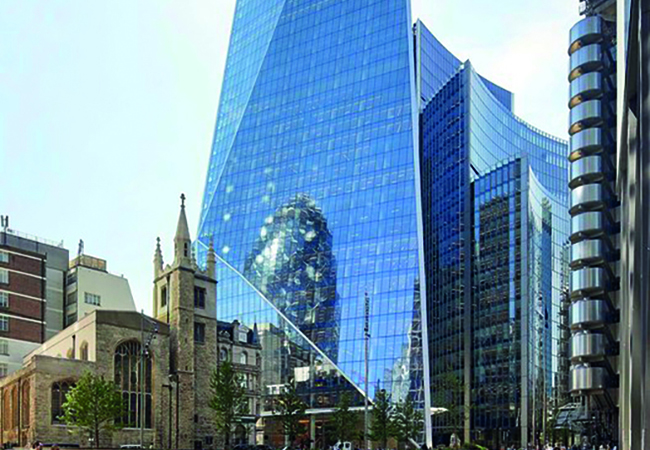
This year’s shortlist for CIBSE’s Product or Innovation – Air Quality Award features five exceptional products and innovations, each showcasing significant contributions to improving building air quality. The award celebrates advancements that elevate the standards of heating, ventilation, cooling and humidification, as well as solutions that treat and enhance indoor air quality (IAQ).
The judges praised this year’s entries for their ability to meet core objectives with efficiency, reflecting the industry’s commitment to healthier and more sustainable indoor environments. These shortlisted innovations represent the cutting edge of air quality management, offering impactful solutions that align with the growing emphasis on occupant wellbeing and environmental responsibility.
Kaiterra: Sensedge Mini Indoor Air Quality Monitor

The Sensedge Mini is an advanced indoor air quality monitor designed for seamless integration into both new and retrofit projects. It measures six key IAQ parameters: PM, CO2, VOCs, ozone, temperature and humidity – allowing proactive air quality management in a sleek, discreet design. With BMS integration and cloud-based analytics, it supports automated ventilation control and provides detailed insights for healthier, energy-efficient indoor environments.
Its modular design makes sensor replacement simple, reducing downtime and extending lifespan, while various power and data transmission options ensure flexible installations. Certified by Reset and Well, the Sensedge Mini supports sustainability and future-proofs buildings against regulatory changes.
Monodraught: Acuity Central Connectivity System

Monodraught’s Acuity system is equipped with advanced sensors, and measures key parameters such as temperature, CO2, VOCs, pollutants and humidity, offering a comprehensive view of indoor climate. Data is securely transmitted to the cloud via 4G/5G, enabling real-time analysis and proactive issue detection. Weekly reports provide actionable insights, optimising system efficiency, energy use and air quality.
The Acuity system eliminates manual data collection using IoT and cloud technologies for remote monitoring and software-over-the-air updates, reducing onsite visits and carbon emissions. Its integration with Monodraught’s HVR Zero hybrid ventilation system minimises energy use by balancing natural and mechanical ventilation, while seasonal adaptability ensures year-round comfort and efficiency.
With an intuitive interface for real-time monitoring and diagnostics, Acuity aids quick issue resolution. Its modular design supports bespoke control setups for various projects, with continuous development to ensure high performance.
Pluvo: the Pluvo Column (pictured at top)
The Pluvo Column is a compact, energy-efficient air filtration totem designed to improve air quality in urban hotspots, such as transport hubs. It processes 1m³ of air per second, creating clean air zones with a 20-60m radius, reducing exposure to pollutants such as NOx, SOx and PM10, and viruses. Its three-stage filtration system, including an electrostatic precipitator, gas filtration media and F8 post-filters, captures up to 99.5% of targeted pollutants and operates with low power consumption (<700 watts).
The Pluvo Column’s modular stainless steel structure features polycarbonate panels with integrated LED or digital displays for advertising and wayfinding, making it self-funding. IoT technology enables remote monitoring and optimisation, while Pluvo manages maintenance, including pollutant collection and consumable replacement. Its compact 0.5m² footprint and straightforward installation make it suitable for diverse locations.
Constructed from recyclable materials and minimal adhesives, the Pluvo Column emphasises sustainability and circularity.
Savills: Data Led Air Handling Control

This demand-driven air supply system leverages machine learning and wireless IAQ sensors to enhance building ventilation efficiency. By integrating IAQ sensors and people counters into building management systems (BMS), it delivers fresh air precisely where needed, reducing energy waste and optimising occupant wellbeing. Granular visibility of air quality and occupancy levels allows the system to adapt dynamically to buildings with variable occupancy patterns.
Using Well-certified sensors, it monitors temperature, humidity, CO2 and particulate levels, paired with optical people counters for 99.8% accurate occupancy detection. This data informs air handling units (AHUs), dynamically adjusting air volume based on real-time demand.
Implemented at 52 Lime Street, pictured left, the system reduced HVAC energy consumption by 40% and improved IAQ without compromising comfort. It integrates seamlessly with existing BMS infrastructure, ensures fail-safe operations, and provides dashboards for IAQ and energy performance monitoring.
Vent-Axia Lo-Carbon Sentinel Econiq

With the Future Homes Standard approaching, which aims to cut carbon emissions in new homes by up to 75-80% compared with current regulations, Vent-Axia’s Lo-Carbon Sentinel Econiq is designed for low carbon heat recovery ventilation in airtight, thermally efficient homes.
Offering up to 93% heat recovery and specific fan powers (SFPs) as low as 0.39w/ls, the unit operates with noise levels as low as 15.5 dB(A), while delivering excellent indoor air quality through advanced sensors and controls.
The Sentinel Econiq includes advanced filtration options (ISO ePM10 and ePM2.5) to remove allergens and particulates, maintaining system efficiency. Designed for sustainability, it uses low-embodied carbon materials and facilitates end-of-life recycling.
To book a place at the BPAs on 27 Feb visit www.cibse.org/bpa


